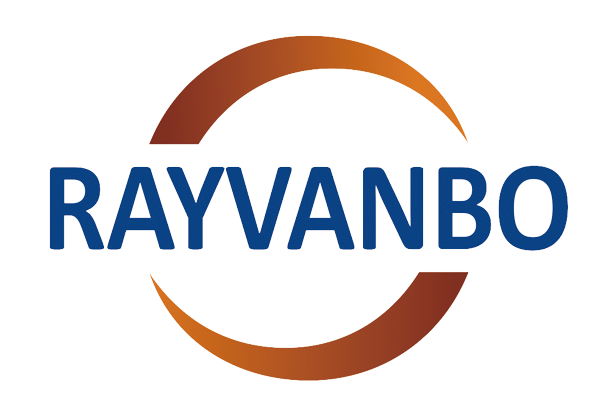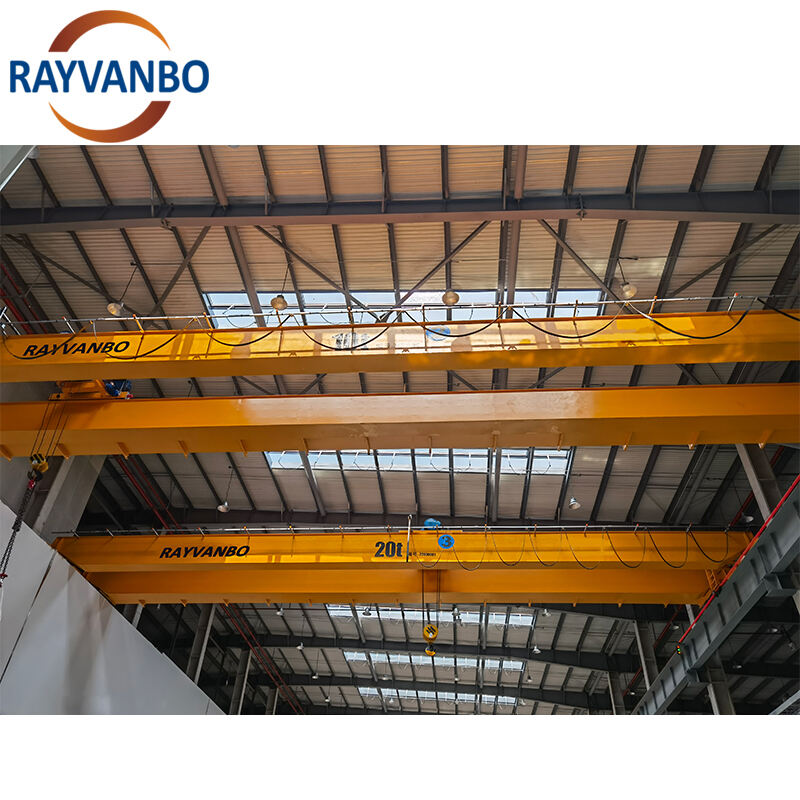Түсіну Жоғары Кран Інсталляция Қоғамдары
Кран орнатуында ANSI/ASME сәйкесшілігі
Егер біз заттарды қауіпсіз, заңды және үздіксіз жұмыс істеуін қамтамасыз еткіміз келсе, онда кран-балқыту қондырғыларын орнату кезінде ANSI және ASME стандарттарын сақтау өте маңызды. Негізгі стандарттарға ASME B30 сериясы мен ANSI/ASSE A10.11 стандарттары жатады, олар нақты әртүрлі кран модельдерін қамтиды. Бұл стандарттар олардың жасалуынан бастап, дұрыс орнату процедуралары мен кезеңдік техникалық қызмет көрсету тексерулеріне дейінгі барлық жағдайларды қамтиды. Компаниялар осы ережелерге сәйкес келсе, апаттар саны шынымен азаяды және операциялар жалпы алғанда тиімдірек орындалады. Керісінше, оларды сақтамау жылдам қымбатқа түседі. Біз кейбір жағдайларда компаниялар қаржылық салықтарға ұшырағанын, заңдық тәуекелдердің артқанын және ең бастысы, жұмысшылардың ауыр жарақат алуы мен жабдықтардың зақымдануын байқадық, өйткені кішігірім көтергіш машиналарды орнату немесе техникалық қызмет көрсету кезінде бұрыштар кесіліп алды.
ANSI/ASME стандарттарына сай келу операциялардың тегіс жұмыс істеуін қамтамасыз ететін компаниялар үшін маңызды мәселе екенін түсіну керек. Бірінші қадам ретінде не істеу керек? Крандарды дұрыс орнату ережелерін жақсы білетін және барлығы маңызды қауіпсіздік ережелеріне сәйкес болатын сертификатталған мамандарды тарту пайдалы болады. Қызметкерлердің қарапайым дайындығы да маңызды. Қызметкерлер шынайы біліп үйренсе, онда құрылыс алаңындағы қауіпсіздікті сақтау ісі жақсы жылжиды. Overhead Crane нұсқаулығы жақсы дайындалған қызметкерлердің көмегімен аздау апаттар мен жалпы өнімділіктің артуына ықпал ететінін көрсетеді. Осы аяларға қаражат салу тек әркүнгі жұмысты атқарушыларды қана қорғамайды, сонымен қатар бүкіл сала бойынша сенімді қалыптастырады.
Кез келген тәсілдік Жоғары Кран Орнату процесі
Өнімді орнату алдындағы орналасу бағалауы
Аспалы кран орнату кезінде жақсы алаңды бағалау барлық айырмашылықты жасайды. Әдіс негізгі заттардан басталады: алаңды өлшеу, ғимарат конструкциясының шын мәнінде қаншалықты беріктігін қарау және кейін операцияларына әсер етуі мүмкін қоршаған орта мәселелерін ескеру. Қауіпсіздік осы жерде бірінші орында тұр, сондықтан проблемаларды апатқа айналмас бұрын анықтау қажет. Төмен төбе биіктігі, өте жақын жүріп жатқан электр желілері немесе деңгейлі емес жер беті сияқты заттар кейінгі уақытта нақты бас ауыртулар тудыруы мүмкін. Құжаттама да маңызды. Дәл өлшемдері бар алаң картасы мен қауіпсіздік бойынша жан-жақты есептер кран әр күні қандай ортада жұмыс істейтінін барлығы түсінуіне көмектеседі. Кәсіби мамандар көбінесе тізімнен пайдаланады. Жергілікті жағдай тексеру мен электр желілерін бағалау міндетті түрде солардың ішінде болуы керек. Осындай қарапайым қадамдар ақша мен өмірді ұзақ мерзімде үнемдеуге және күтпеген тоқтауларсыз сұйық жұмысты жалғастыруға көмектеседі.
Құрылымдық жинақтау және электр интеграция
Аспалы кран жинау кезінде әрбір қадамда дәлдік пен құралдарды дұрыс пайдалану қажет. Бұл крандарды жасау кезінде инженерлік жоспарларға сәйкес барлық бөлшектерді дұрыс орналастыру үшін арнайы құралдар, мысалы, момент кілттері мен туралау лазерлері қажет. Барлығын дұрыс бекіту жүк көтергіштің сенімділігі үшін өте маңызды. Электр жабдықтары да сол сияқты маңызды. Сымдарды қауіпсіз түрде өткізу және операторлар кранмен қозғалып жүру үшін басқару панельдеріне дұрыс қосу керек. Әртүрлі бөліктер дәл сәйкес келмесе, туралау мәселелері жиі туындайды, сондықтан жұмыс алаңында білікті техниктердің болуы үлкен рөл атқарады. Жобалаушылар конструкциялық топтар мен электр желілерін жүргізіп жатқан электриктердің арасында байланысты ұйымдастырып, барлық орнату процесінде барлығын уақытылы орындауға бағыттайды.
Барлық тестілеу және операциялық іске асыру
Көтергіш крандарды дұрыс орнату процесіне жүктеме сынақтарын жүргізу қажетті бөлігі болып табылады. Бұл процес кран жұмысының сенімділігін арттыру үшін жүктемені көтеру қабілетін бірнеше негізгі көрсеткіштер бойынша тексеруді қамтиды. Барлық сынақ нәтижелерін жүйелі түрде жазып отыру тек жақсы тәжірибе ғана емес, сонымен қатар қауіпсіздік стандарттарын сақтау және заңнама талаптарына сай болу үшін міндетті. Жүктеме сынақтары сәтті өткен соң, келесі кезең ретінде жабдықты іске қосу жүргізіледі. Бұл кезеңде барлық басқару жүйелері дұрыс орнатылып, кранды күнделікті пайдаланатын әрбір жұмысшы үшін қажетті оқыту сессиялары өткізіледі. Сынақтың екі кезеңі мен баптау процесі кезінде өндірушінің нұсқаулықтарына қатаң сәйкес келу маңызды. Осы нұсқаулықтардан ауытқу қауіп-қатер туғызып, қызметкерлердің қауіпсіздігін қамтамасыз етпей қателерге алып келуі мүмкін.
Жалпы Сұрақтарға Жауап Беру Жоғары Кран Қиындықтар
Тезімділік Просактарын Дұрыс Лауыңыз
Егер тәрелмелі крандар жолдан тыс болса, онда операциялар нақты қиындыққа тап болады. Жүк тепе-теңдіктен шығып, барлық жүйелердегі әртүрлі компоненттерге артық күш түсіреді. Бұл әдетте, біреу нәрсені дұрыс орнатпаған немесе уақыт өте қалыпты тозу әсерінен, ал кейде зауытта-ақ кемшіліктерден болады. Сіз олардың қозғалысындағы ерекшеліктерді байқасаңыз немесе көпір бойынша салмақтардың дұрыс таралмағанын байқасаңыз, онда жолдан ауытқуды анықтау қиын емес. Барлығын қайта орнына келтіру үшін дәл деңгейлер мен арнайы дөңгелек өлшеу құрылғылары сияқты нақты жабдықтар қажет. Көбінесе кәсіпорындар техникалық қызмет көрсету жоспарына сәйкес кезеңдік тексерулер жүргізеді, сонымен қатар операторлардың дұрыс дайындалуын қамтамасыз етеді, сондықтан олар мәселелерді күшеймей тұрып уақытылы байқап үлгереді. Крандардың жолын дұрыстау қауіпсіздік пен тиімді жұмыс үшін де маңызды. Бұл қымбат тұратын бөлшектердің тозуын азайтып, өндірістік желілерді тоқтататын күтпеген ақауларды болдырмау арқылы ақшаны үнемдейді. Жақсы туралау тәжірибесін ұстанатын кәсіпорындар әдетте өз крандарының ұзақ өмір сүріп және күн сайын жақсы жұмыс істейтінін байқайды.
Жиі бет қабылдайтын компоненттердегі өнеркәсіптік жұмыс істемеуін басқару
Аспалы көтергіш крандардың салмақ тасымалдайтын бөлшектері уақыт өткен сайын әсіресе тізбектер мен роликтік жүйелер сияқты заттардың тозуына ұшырайды. Бұл тозу кранның қауіпсіздігіне де, күнделікті жұмыс істеуіне де әсер етеді. Бұл бөлшектерді ретімен тексеріп отыру әр нәрсенің шешімі болып табылады. Көбінесе операторлар бөлшектердің талшықтануы немесе пішінінің бұзылуы сияқты белгілерді анықтау үшін қарапайым визуалды тексерулерден бастайды. Күрделірек әдістерге қатты дыбыстық тексеру мен магниттік бөлшектерді тексеру жатады, бұлар ертерек ақауларды анықтап, олардың көпшілік проблемаларға айналуын болдырмақшы болады. Бөлшектер белгілі бір тозу деңгейіне жеткенде оларды ауыстыру апаттық үзілістерді болдырады. Біз өндірістік кәсіпорындарда кішігірім тозуды елемеу әртүрлі ауыр әрі қымбатқа түсетін тоқтауларға алып келетін көптеген жағдайларды куә болдық. Ұзақ мерзімді сенімділік үшін жоғары сапалы болат қорытпаларын пайдаланып, бөлшектерге арнайы қаптамалар немесе жылумен өңдеу процесстерін қолдану шын мәнінде төлемін береді. Тиімді техникалық қызмет кестесін ұстану мен ақылды материал таңдаулар жұмыс ортасының қауіпсіздік стандарттарын сақтамай-ақ крандарды жылдан жыл жұмыс істеуге мүмкіндік береді.
Wuhan Rayvanbo Import & Export Trade Co., Ltd. жоғары кран саласында бірінші қадамдағы атау, әлде-әлеуметтік кран жабдықтары мен оған қатысты қызметтерді ұсынуға арналған. Олар кенеттік мәндерді қамтиды, күшейтін жарық-сыйлық компоненттер мен жامаны толықтыру шешімдерін ұсынады, кран еңбектерінің қызметін және қауіпсіздігін қамтамасыз етеді.

